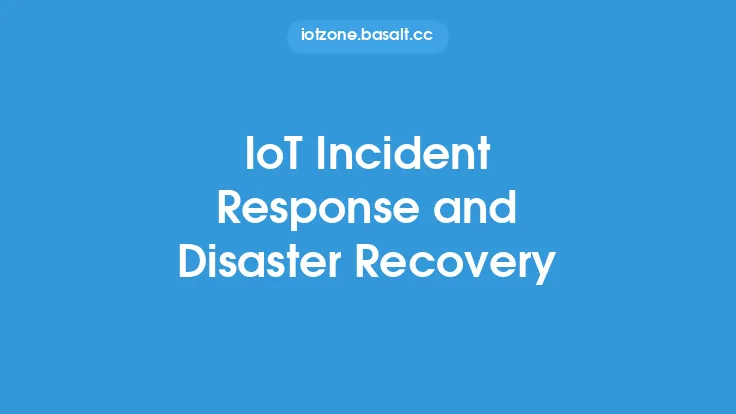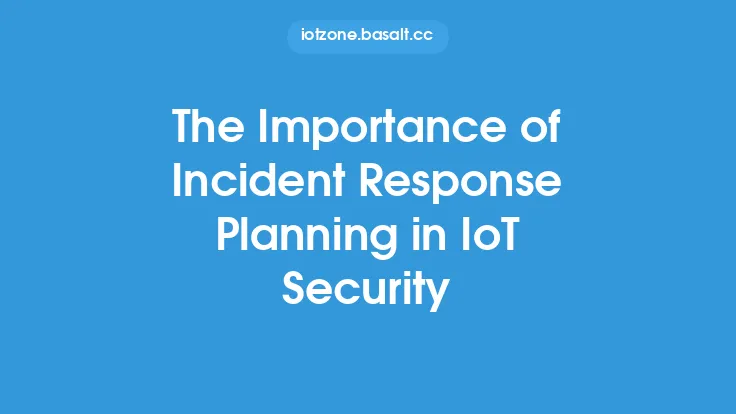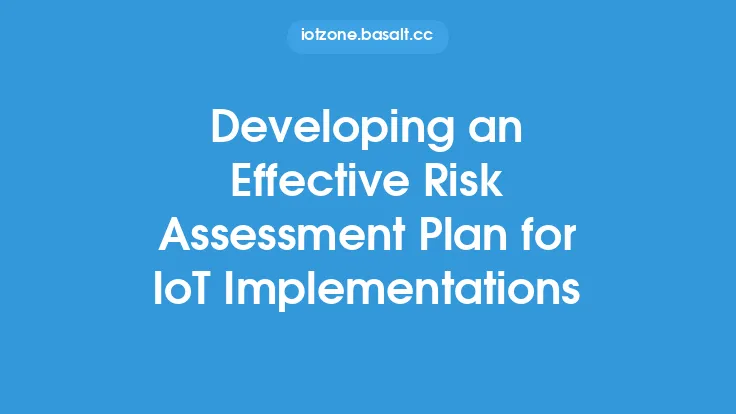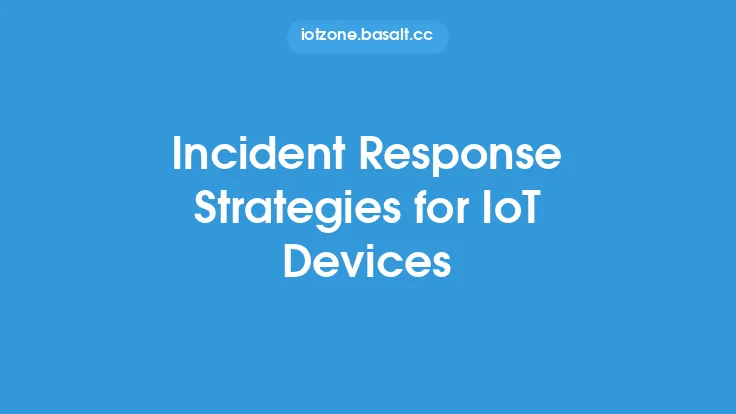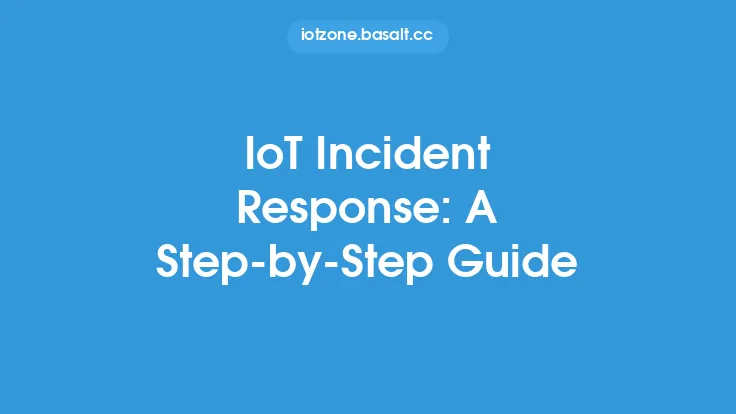Developing a team to handle incidents related to the Internet of Things (IoT) requires careful planning, execution, and maintenance. This team, known as an IoT Incident Response Team, plays a crucial role in ensuring the security and integrity of IoT devices and systems. The primary goal of such a team is to quickly respond to and mitigate the effects of security incidents, minimizing downtime and data loss.
Understanding the Role of an IoT Incident Response Team
An IoT Incident Response Team is responsible for identifying, containing, and eradicating threats to IoT devices and systems. This team must have a deep understanding of IoT technologies, including device management, network protocols, and data analytics. The team's responsibilities include monitoring IoT systems for potential security threats, responding to incidents, and implementing measures to prevent future incidents. Effective communication and collaboration among team members are essential to ensure a swift and efficient response to security incidents.
Building an IoT Incident Response Team
Building an effective IoT Incident Response Team requires a structured approach. The first step is to identify the key roles and responsibilities within the team. These roles may include incident responders, security analysts, network engineers, and communications specialists. Each team member should have the necessary skills and training to perform their duties effectively. The team should also have a clear understanding of the incident response process, including incident detection, containment, eradication, recovery, and post-incident activities.
Key Skills and Training for IoT Incident Response Team Members
IoT Incident Response Team members require a range of skills, including technical, analytical, and communication skills. Technical skills may include knowledge of IoT protocols, device management, and network security. Analytical skills are necessary for incident analysis and root cause identification. Communication skills are essential for effective collaboration among team members and for reporting incident response activities to stakeholders. Team members should also receive training on incident response methodologies, such as NIST or ISO 27035, and on IoT-specific security threats and vulnerabilities.
Incident Response Process for IoT Security Incidents
The incident response process for IoT security incidents involves several stages. The first stage is incident detection, which involves monitoring IoT systems for potential security threats. The next stage is incident containment, which involves isolating affected devices or systems to prevent further damage. The eradication stage involves removing the root cause of the incident, such as malware or unauthorized access. The recovery stage involves restoring affected devices or systems to a known good state. Finally, the post-incident stage involves reviewing the incident response activities and implementing measures to prevent future incidents.
Tools and Technologies for IoT Incident Response
IoT Incident Response Teams require a range of tools and technologies to perform their duties effectively. These tools may include security information and event management (SIEM) systems, incident response platforms, and network monitoring tools. SIEM systems provide real-time monitoring and analysis of security-related data, while incident response platforms provide a structured approach to incident response. Network monitoring tools provide visibility into network traffic and device activity, helping teams to detect and respond to security incidents.
Challenges and Considerations for IoT Incident Response Teams
IoT Incident Response Teams face several challenges and considerations, including the complexity of IoT systems, the lack of standardization, and the limited visibility into device activity. IoT systems often involve multiple devices, protocols, and networks, making it challenging to detect and respond to security incidents. The lack of standardization in IoT devices and protocols can also make it difficult to develop effective incident response strategies. Limited visibility into device activity can make it challenging to detect security incidents, highlighting the need for effective monitoring and analytics tools.
Best Practices for IoT Incident Response Teams
IoT Incident Response Teams should follow best practices to ensure effective incident response. These best practices include developing a comprehensive incident response plan, providing regular training and exercises, and conducting post-incident reviews. A comprehensive incident response plan should include procedures for incident detection, containment, eradication, recovery, and post-incident activities. Regular training and exercises help to ensure that team members have the necessary skills and knowledge to respond to security incidents. Post-incident reviews help to identify areas for improvement and implement measures to prevent future incidents.
Conclusion
Developing an IoT Incident Response Team requires careful planning, execution, and maintenance. The team should have a deep understanding of IoT technologies, including device management, network protocols, and data analytics. The team's responsibilities include monitoring IoT systems for potential security threats, responding to incidents, and implementing measures to prevent future incidents. By following best practices and using the right tools and technologies, IoT Incident Response Teams can help to ensure the security and integrity of IoT devices and systems.
